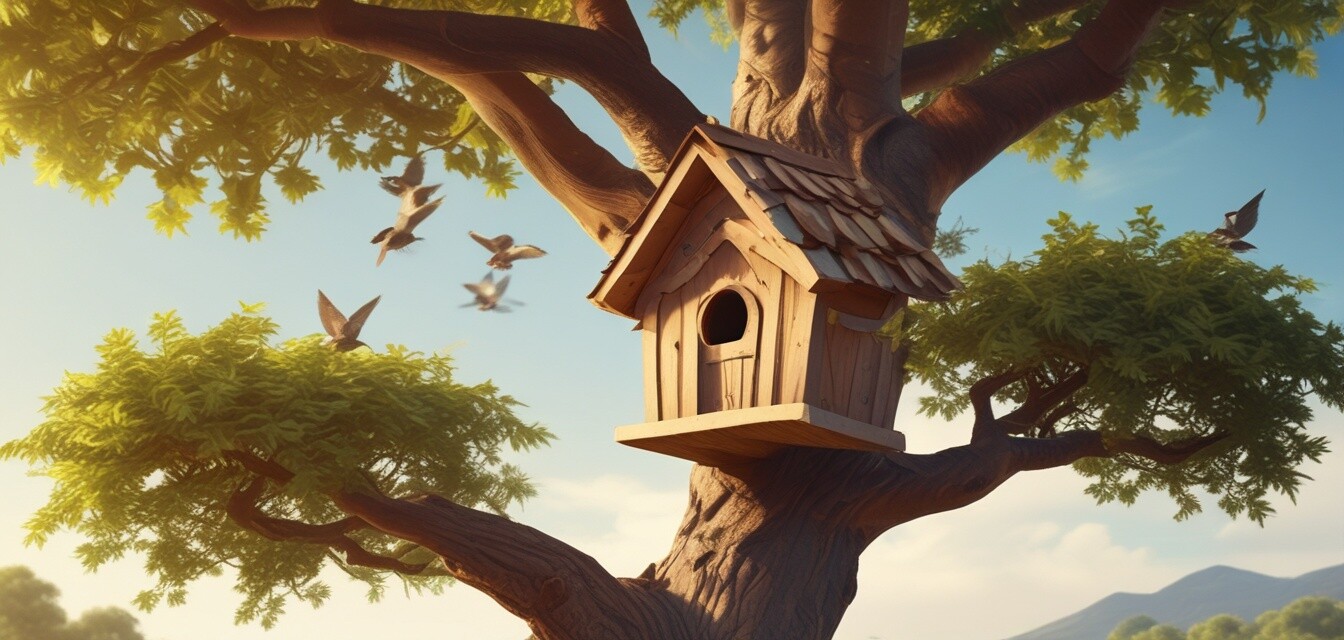
Tips for building your own bird house
Creating your own bird house can be a rewarding and enjoyable project, allowing you to provide shelter for various bird species while enhancing your backyard or balcony aesthetic. This guide will cover essential tips for constructing a bird house, including design ideas, materials needed, and placement suggestions.
Key Takeaways
- Choose bird house designs according to the birds in your area.
- Select appropriate materials that ensure durability.
- Consider the right placement to attract birds effectively.
- Maintain your bird house for ongoing avian visitors.
Understanding bird house designs
The design of your bird house is crucial for attracting the right species. Here's a table highlighting different designs along with their target bird species:
| Design | Target Bird Species | Dimensions |
|---|---|---|
| Simple Box | Chickadees, Wrens | 6"x6"x8" |
| Pitched Roof | Bluebirds, Robins | 8"x8"x10" |
| Open Front | American Robins | 12"x8"x10" |
| Wooden Cylinder | Nuthatches, Tits | 6" diameter, 12" tall |
Materials needed
When building your bird house, the following materials are recommended for durability and safety:
- Untreated wood (cedar or pine)
- Wood screws
- Wood glue
- Sandpaper
- Non-toxic waterproof paint or sealant
Building your bird house
Here’s a simplified step-by-step guide to constructing your bird house:
- Cut the panels to size according to your chosen design.
- Sand the edges to prevent injury to birds.
- Assemble the panels using screws and wood glue.
- Drill an entrance hole suited for the target bird species.
- Optional: Paint or treat the exterior with safe materials.
- Add drainage holes to the bottom of the house.
- Mount or hang the bird house securely in your yard.
Placement tips
Finding the right location plays an essential role in attracting birds to your house. Consider the following tips:
- Place the bird house at a height of 5 to 10 feet.
- Ensure there are trees or shrubs nearby for safety and food sources.
- Avoid direct sunlight; morning light is ideal.
- Keep the entrance hole away from prevailing winds to protect against rain.
Maintaining your bird house
Regular maintenance ensures that your bird house remains inviting and safe for returning birds.
- Clean out old nesting materials after each breeding season.
- Check for damages and repair any holes or cracks.
- Inspect for pests and remove any unwanted guests.
- Repaint or reseal as needed to protect the wood.
Pros
- Provides shelter and nesting for birds.
- Enhances the natural beauty of your yard.
- Can be customized for specific bird species.
Cons
- Requires some DIY skills and tools.
- Maintenance is necessary to keep it safe for birds.
- Placement can be tricky and requires planning.
Learn more about birds
If you are eager to further enrich your bird-loving knowledge, take a look at these related articles on our site:
- Explore various bird house options
- Check out our buying guides to bird-related products
- Learn how to keep your garden bird-friendly with bird baths
- Understand the best bird seeds for attracting specific species
- Stay updated with the latest trends in bird watching
Final thoughts
Building your own bird house is not only a fulfilling endeavor but also contributes to a growing bird population in your area. With the right design, materials, and placement, you can create a safe haven for your feathered friends. Remember to maintain your creation and enjoy watching nature thrive right in your backyard!